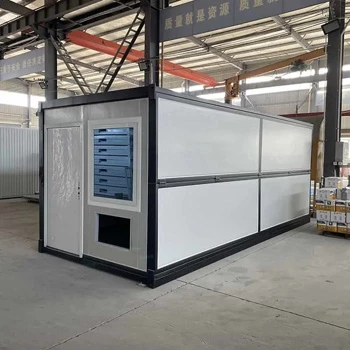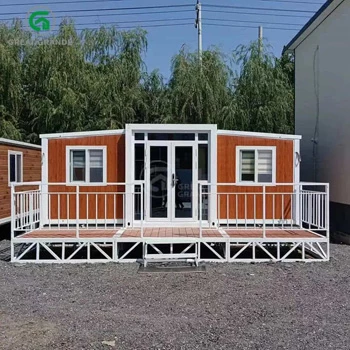Expanded container houses have gained popularity as a cost-effective and sustainable housing option. However, like any construction material or housing type, their safety depends on several factors. Below is an overview of the key safety aspects to consider when evaluating the safety of an expanded container house:
1. Structural Integrity
Material Strength: Shipping containers are built from strong steel, designed to withstand heavy loads during transportation. When repurposed into homes, they retain much of their structural strength, but modifications (like cutting windows, doors, or openings for ventilation) can weaken the structure if not properly reinforced.
Reinforcements: Depending on how the container is modified (e.g., cutting walls or removing parts of the frame), additional reinforcement may be necessary. In most cases, a structural engineer should assess and strengthen the container before use as a residence.
2. Insulation and Temperature Control
Thermal Insulation: Shipping containers homes are made of steel, which is a poor insulator. Without proper insulation, container homes can become extremely hot in summer and cold in winter, leading to uncomfortable living conditions.
Fire Safety: While metal itself is non-combustible, the materials used for insulation and interior finishes may be flammable. It's essential to use fire-resistant insulation and finishes to reduce fire risk.
Ventilation: Proper ventilation is necessary to ensure a safe indoor air quality environment. Containers can be prone to condensation, which can lead to mold or mildew growth if not properly ventilated. Installing windows, vents, or even air conditioning and heating systems helps mitigate these risks.
3. Rust and Corrosion
Corrosion: Steel Shipping containers homes are usually made of steel and are designed to withstand the harsh conditions of ocean transport. However, over time, exposure to moisture, especially if the container is not properly sealed, can lead to rust and deterioration. It’s important to maintain the exterior coating and treat the steel to prevent corrosion.
Protection: Rust prevention measures, such as regular inspections and applying anti-corrosion coatings, can extend the life of a container home.
4. Electrical and Plumbing Systems
Electrical Wiring: Shipping containers are not designed for standard electrical systems, so modifications are needed to install wiring safely. It is essential to follow local building codes and regulations and to have the electrical work done by a licensed professional to avoid hazards like electrical fires.
Plumbing: Similarly, plumbing systems need to be installed and properly sealed to avoid leaks, and the container's drainage system must be carefully planned to prevent water accumulation.
5. Environmental Factors
Seismic Considerations: If the container house is being built in an area prone to earthquakes or extreme weather, additional structural considerations may be needed to ensure the container can withstand seismic activity, heavy winds, or flooding.
Flooding Risk: Containers should be elevated to avoid flooding, especially in areas prone to heavy rainfall or near bodies of water. Flooding can damage the structure and cause health hazards from mold or waterborne diseases.
6. Security
Security Features: Shipping containers houses are relatively secure due to their steel structure, but they may still be vulnerable to break-ins if not reinforced. Installing high-quality locks, security cameras, and other security features is important to ensure the safety of the residents.
Windows and Doors: While shipping containers are strong, windows and doors can be weak points if not properly designed and reinforced. Secure, high-quality window frames and doors should be used to prevent unauthorized access.






